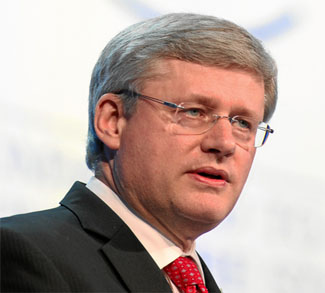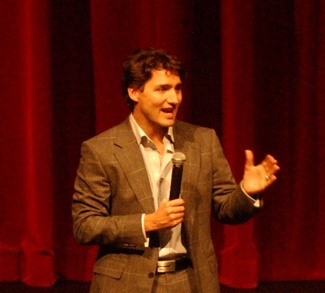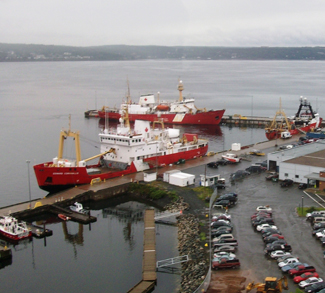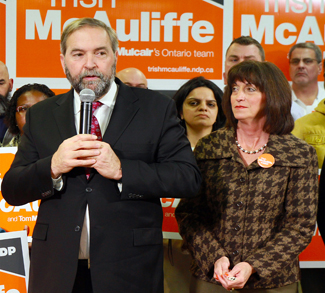In March 2013, the Canadian International Development Agency (CIDA) was dissolved and its responsibilities absorbed by the newly renamed Department of Foreign Affairs, International Trade and Development (formerly DFAIT). The move signals a change in Canada’s approach to aid, adding commercial and foreign-policy objectives to a programme whose previous purpose was exclusively humanitarian. Minister for International Cooperation Julian Fantino has asserted that poverty alleviation will remain at the core of Canada’s aid activities; others have suggested that the merger of CIDA and DFAIT will “dilute” Canada’s development commitments and serve private interests, “casting a shadow” on any original benevolent purposes.
The merger of CIDA and DFAIT signals a shift in Canadian foreign policy and aid priorities, which have been unclear at best over the past several years. In 2009, a Canadian embassy in Malawi was closed barely five years after being established under Prime Minister Paul Martin. That same year, the vast majority of annual bilateral aid went to Latin American countries. In 2010, the Canadian government announced a freeze on aid to Africa until the allocation of previous funding could be examined. Prior to the announcement, it was revealed that nearly $900,000 had been embezzled by corrupt Zambian bureaucrats. Earlier this year, Canada cut foreign aid to China as part of efforts to slash almost $380 million in aid spending by 2015. The cuts were justified as an attempt to allocate funds more precisely and work more closely with the private sector.
While a 2012 Organization for Economic Co-operation and Development (OECD) report praised Canada’s aid programme under CIDA for its emphasis on human rights and its efforts in Afghanistan and Haiti, it also called for better coherence and transparency. The report recommends an overall increase in Canadian development aid, noting that Official Development Assistance (ODA) fell more than 5% between 2010 and 2011. The report’s findings also reflect the new vision of Canada’s development programme with an emphasis on trade: “Canada should consider how… activities such as ‘aid for trade’ can more directly create a good climate for investment and business in partner countries.”
Canada’s downscaling of international activities has not gone unnoticed in the highest echelons of international governance and security. In particular, the government’s confused policies, dwindling provisions for development aid to Africa, and apparent indifference to economic growth in Southeast Asia have been cited as a potential reasons behind the country’s failed 2010 bid for a seat on the UN Security Council. It was the first time in the UN’s almost 70 year history that Canada failed to win a seat, an indication that Canada’s “profile at the UN is a shadow of its former self.”
Playing on longstanding global and self-perceptions of Canada, the Canadian government portrayed itself as a model citizen of the world in its bid for a Security Council seat – a country with altruistic aid policies and a tradition of peacekeeping dating back to former Prime Minister Lester B. Pearson, who played a pivotal role in establishing the first UN peacekeeping force during the 1956 Suez Crisis. Despite the widespread acceptance of this vision of Canada as a model citizen, both domestically and internationally, detractors argue that it fails to acknowledge violent events in the country’s past, including the internment of Japanese Canadians during World War Two and the treatment of Aboriginal peoples in residential schools. And more recently, it serves to distort the government’s current foreign aid and other international policies, including its decreased involvement from Africa.
Canada’s relative withdrawal from Africa poses significant economic consequences. A recent post on the International Monetary Fund (IMF) global economy forum declared sub-Saharan Africa to be the second-fastest growing region today. Accordingly, China has ramped up investments, surpassing the United States in trade with sub-Saharan countries. While for the past decade the U.S. has been focused on global security and the War on Terror, China has established major contracts throughout the continent, ensuring access to its resources in exchange for supporting local infrastructure projects.
Despite other priorities, U.S. President Barack Obama recently wrapped up a tour of Africa, during which he announced three new American commitments: a multibillion dollar project to expand electrical infrastructure in sub-Saharan Africa, an investment in the East African Community, and a summit to take place in Washington next year between U.S. officials and leaders from across Africa.
A Google search of Canadian investments in Africa, however, mainly yields information on defunct CIDA projects, non-governmental organizations and Canadian mining companies investing in infrastructure for resource extraction. Other companies like Ottawa-based Cowater International Inc. develop water supply and sanitation infrastructure. Regardless of industry, these investments tell a story: while some private Canadian companies are investing in Africa, the government is largely uninvolved in infrastructure development.
In 2002, hundreds of millions of dollars were allotted to the Canada Fund for Africa programme, including $100 million towards the Canada Investment Fund for Africa (CIFA). CIFA’s website proclaims the programme to be “dedicated to making private equity investments in businesses throughout Africa” with a sizeable “anchor investment” from the Government of Canada. However, the Fund’s investment period ended in December 2008 and CIFA is “no longer looking at new investment opportunities.” Not only has the Canadian government never reached the global target of 0.7 per cent of gross national income for development funding, it also continues to turn a blind eye on mutually beneficial economic opportunities in Africa.
It is clear that the Harper government is bent on continuing to make cuts to the Canadian aid budget, as it has thus far failed to pursue investments in the development of infrastructure for a socially and economically healthy Africa. This withdrawal does not bode well for Canada’s already diminished international position. In May 2013, Foreign Affairs Minister John Baird announced that Canada will not run for a seat on the UN Security Council in 2014. However, if the government is to organize a successful campaign for the next mandate, which commences in early 2016, it must not delay in ramping up its international presence. While the merger of CIDA and DFAIT is likely to reorient Canadian development activities away from aid directly, we can only hope that, in place of aid, the government will pursue new trade and investment opportunities in Africa with the aim of developing African infrastructure and ensuring that a measure of wealth stays on the continent.
The opinions, beliefs, and viewpoints expressed by the authors are theirs alone and don’t reflect any official position of Geopoliticalmonitor.com.




